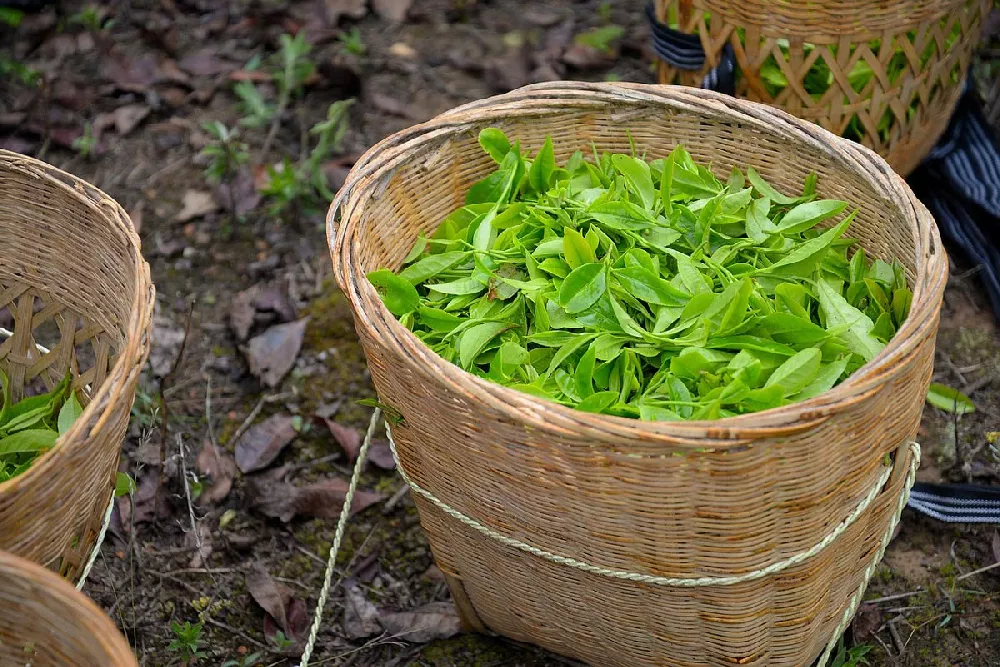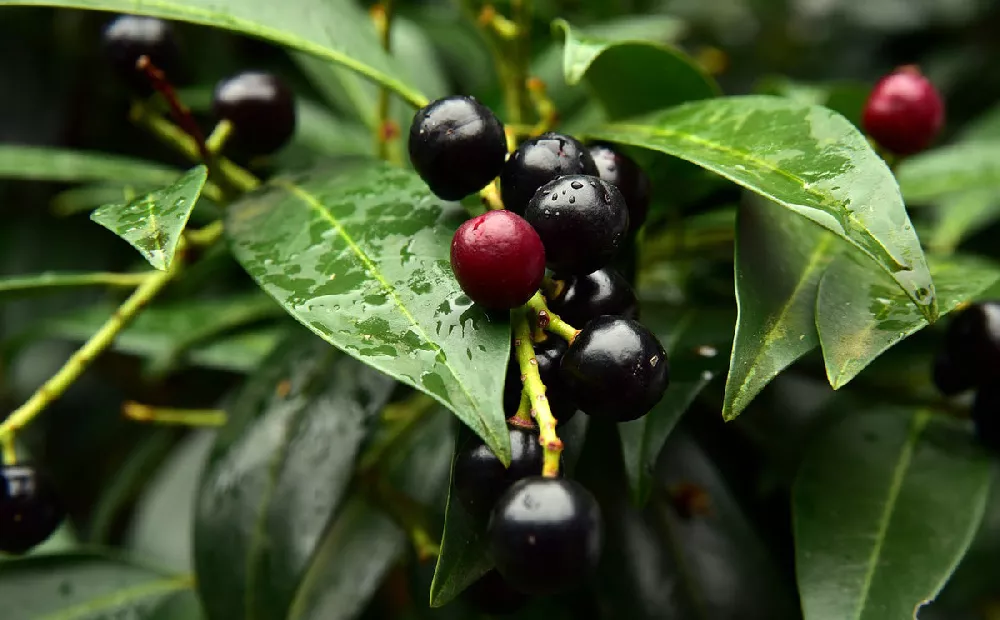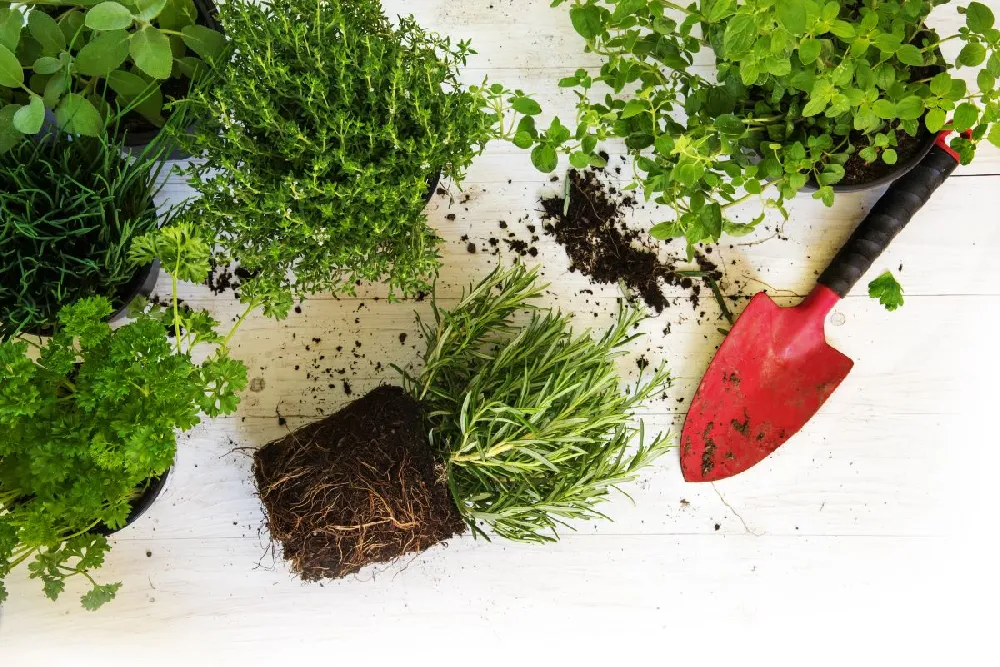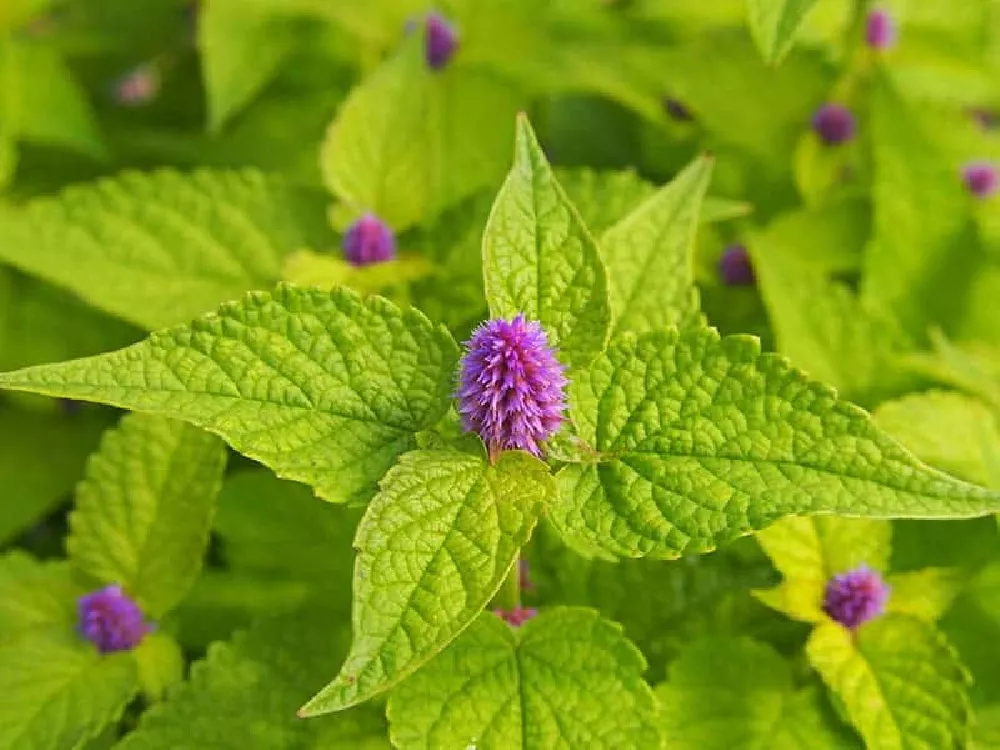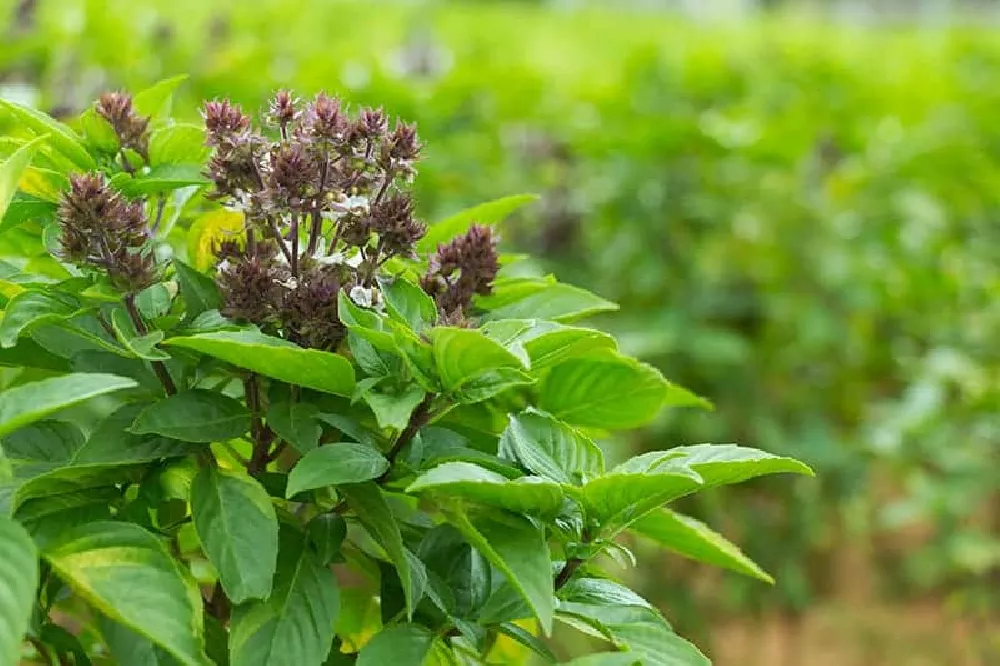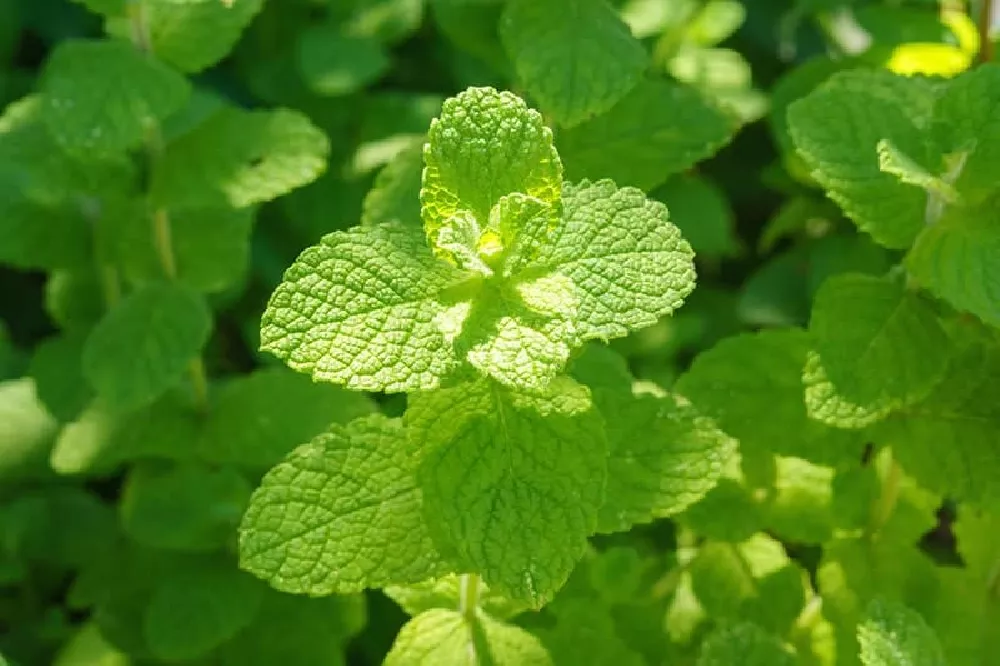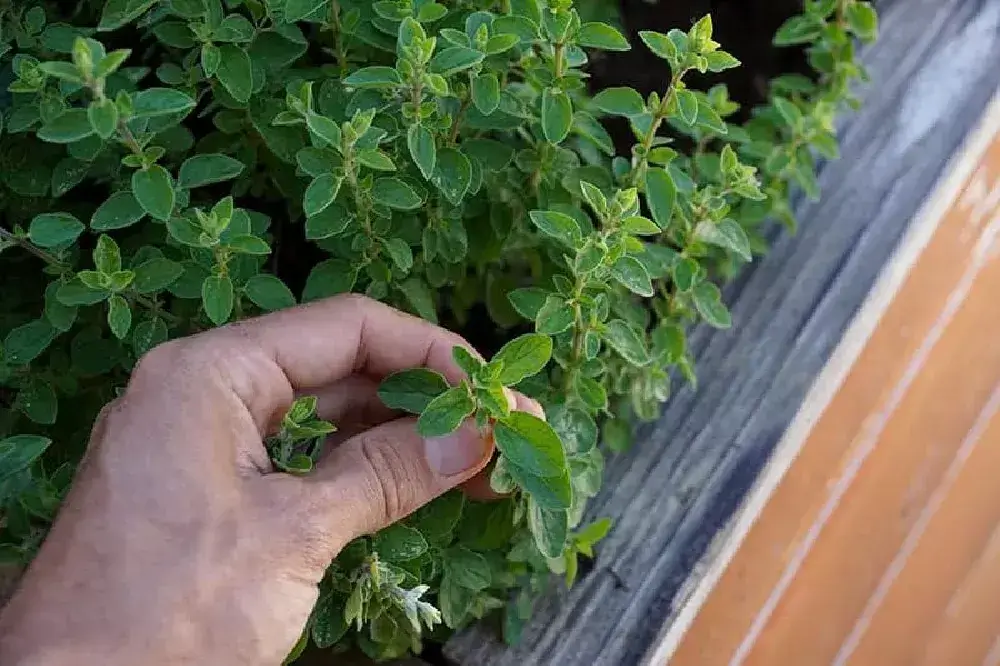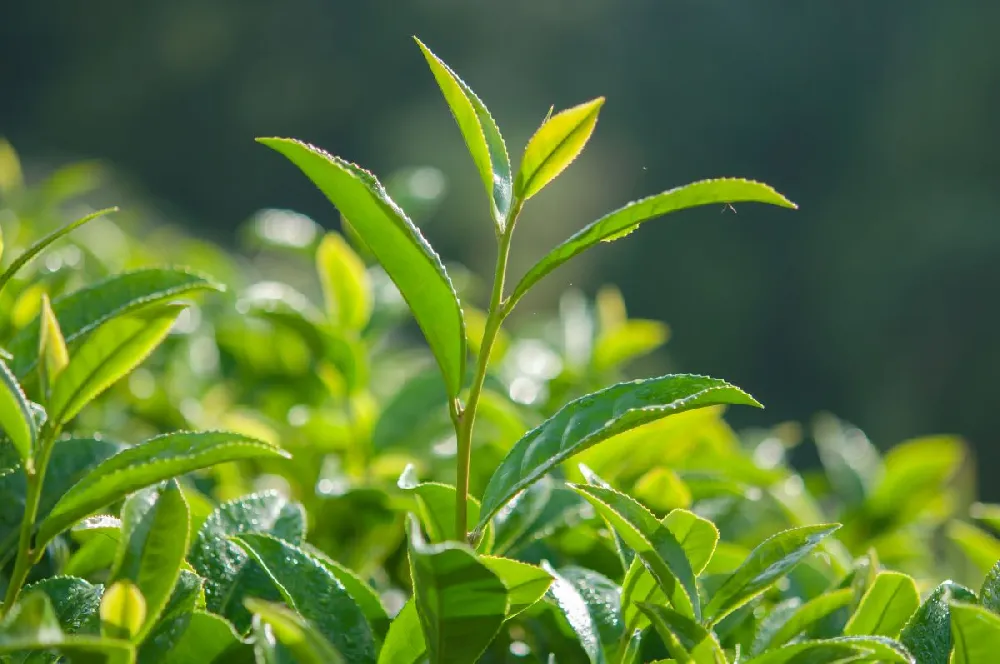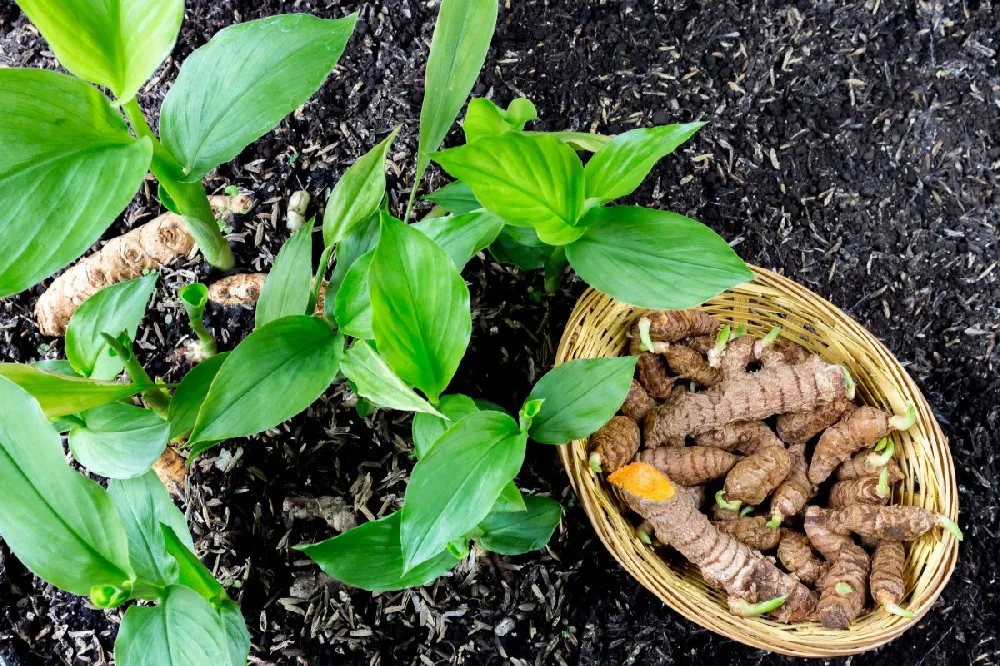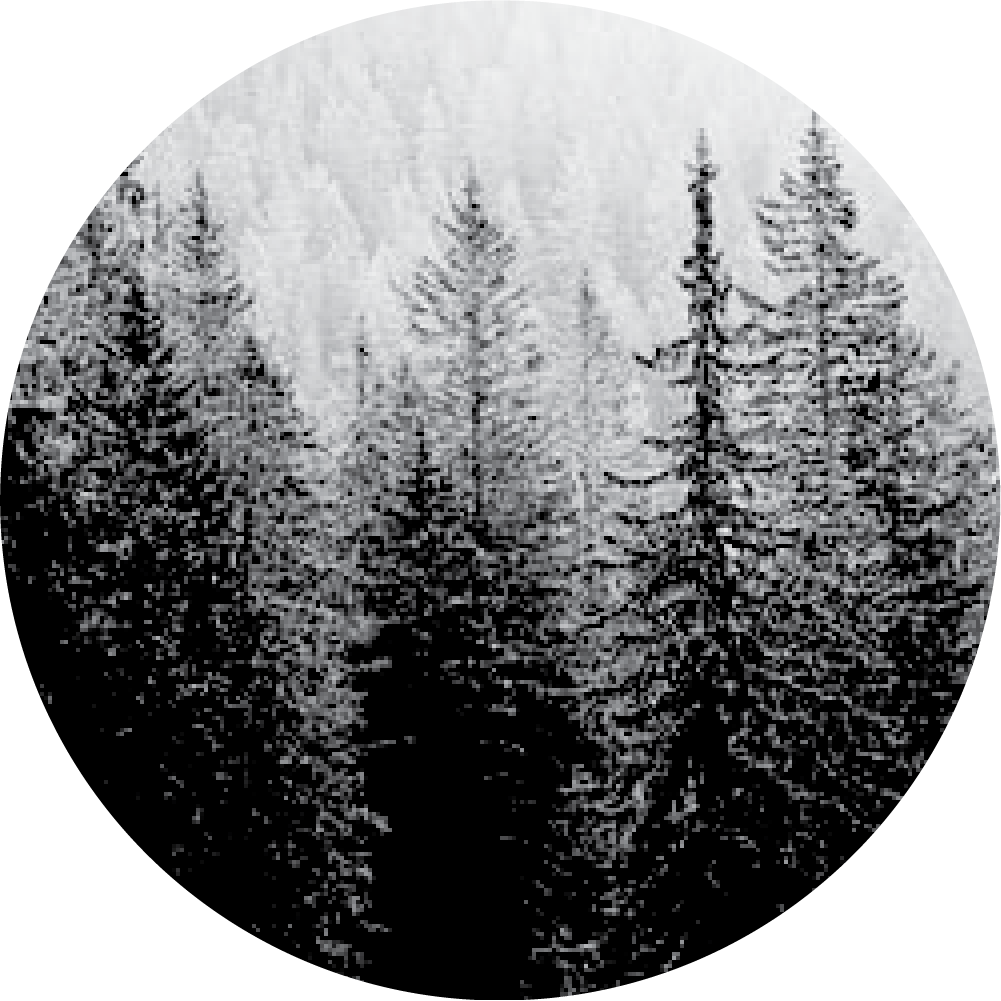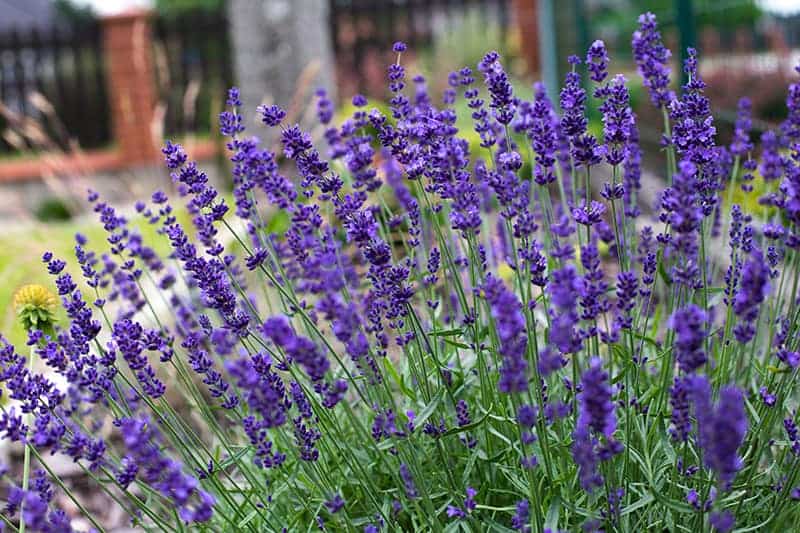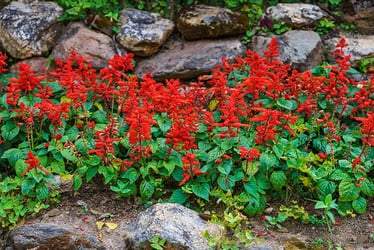- Home >
- Herb Plants
Herb Plants for Sale - Buying & Growing Guide
Filters
Price Range
Growing Zones
Plant Type
Flower Color
Sunlight
Mature Height
Plant Characteristics
19 Results
-
Growing Zone(s): 3-11 / 7-9$56.95
$64.95Save up to 12% -
Growing Zone(s): 5-10$34.95
$39.95Save up to 12% -
Growing Zone(s): 4-9$64.95
$75.95Save up to 14% -
Growing Zone(s): 3-11 /$98.95
$144.95Save up to 31% -
-
-
-
-
Sold OutGrowing Zone(s): 4-11 patio / 7-9 Outdoors$41.95
-
Sold OutGrowing Zone(s): 3-8$52.95
-
Sold OutGrowing Zone(s): 4-11 / 8-11$24.95
-
Sold OutGrowing Zone(s): 4-11 patio / 8-10 outdoors$41.95
Herb Plants – Buying & Growing Guide
Herbs are a wonderful addition to any garden, offering instant flavor to culinary dishes and providing fragrance wherever you grow them. Herbs are often also ornamental and can be grown indoors in containers, or outside in borders, making them suitable even for people with very limited growing space. Learn which herbs are best for growing in your region, as well as how to care for and how to use some of the most popularly cultivated herb plants.
10 Types of Herbs
1. Parsley

Types: Curled Leaf Parsley, Flat Leaf Parsley, Italian Parsley
Scientific Name: Petroselinum crispum
Mature Size: Up to 1 foot tall
USDA Hardiness Zone: 2-11
Light: Full sun to partial shade
Water: Maintain moist soil
Soil: Well-draining, fertile
Flower Color: Yellow-green
Parsley is one of the most widely cultivated herbs in the world, with aromatic leaves that add flavor to a huge variety of dishes, including salads, stir-fries, pasta, soups, vegetables, and sauces. It is also commonly used as a garnish, adding an attractive presentation to almost any dish.
Parsley is native to the Mediterranean region, and is a hardy plant with a dense growth habit, forming mounds of bushy medium green foliage. The leaves have a triangular shape with serrated edges and can be flat or curled depending on the variety. In its second year of life, a parsley plant will bloom, producing thin stalks that rise above the foliage.
The flowers are small and yellow-green in color. If left, these flowers will turn to seed, and the plant will self-seed in ideal conditions, giving you further parsley plants from which you can harvest the herb. This is beneficial as parsley is best grown from new every year; after a parsley plant becomes one or two years old, the leaves tend to become quite rough, and the herb loses much of its flavor.
Parsley will grow well in a wide range of climates and can adapt to life in full sun or partial shade. If shading the plant, afternoon shade and morning sun would be preferable. This plant is not too fussy about its soil type, so long as it is free draining, though a rich and fertile soil would be best.
The plant will quickly perish if the soil is allowed to go dry, so water the plant frequently, especially when kept in full sun. Parsley can be grown indoors and outdoors and is well suited to life in a container.
2. Oregano

Types: Common Oregano, Golden Oregano, Ornamental Oregano, Mexican Oregano, Italian Oregano, Greek Oregano
Scientific Name: Origanum vulgare
Mature Size: Up to 3 feet
USDA Hardiness Zone: 4-8
Light: Full sun
Water: Low
Soil: Well-draining
Flower Color: Pink-lilac
Oregano is a woody perennial which fares best in hot and dry climates. It is native to Africa and mild regions of Europe. The plant consists of sturdy square stems, which are crowded with small oval green leaves. The leaves have many glands, which release a strong scent when the foliage is crushed. The plant blooms in the middle of summer with pretty and delicate looking tiny flowers in shades of pink and pale purple. The flowers are held high above the foliage and persist right through to fall. Cut the flower stems back after blooming as this will encourage more leafy growth.
Oregano is cultivated for use as a herb, predominantly in Italian or Greek dishes, where it can be used fresh or dried. Most people will recognize the taste of oregano from the classic Italian recipe of a Margherita pizza. If you want to grow your own herbs and live in a warm climate, then oregano is an easy plant to grow.
It needs full sun and thrives in hot, dry conditions, so neglecting the plant will produce the best results. It is tolerant of both drought and high temperatures, and in fact, will produce the best flavor under these circumstances. The herb will generally be most flavorsome just before it blooms, so take cuttings from the plant in early summer and use straight away. You can also allow the herb to dry out in a dark paper bag for use later in the year, or chop some oregano and add it to an ice tray of water, then add the oregano ice cube to recipes for soups or casseroles in the future.
3. Basil

Types: Sweet Basil, Genovese Basil, Lemon Basil, Cinnamon Basil, Thai Basil, Purple Basil, Greek Basil, Persian Basil, Holy Basil, Lime Basil, Clove Basil
Scientific Name: Ocimum basilicum
Mature Size: Up to 24 inches in height
USDA Hardiness Zone: 2-11
Light: Full sun
Water: Maintain moist soil
Soil: Well-draining
Flower Color: White to purple
This tropical herb is native to areas throughout Africa and Asia, where temperatures are mild. It is one of the most widely consumed of all the culinary herbs, with numerous varieties available to suit different types of recipes and cuisines.
It is most typically grown as an annual, as it loves the summer heat and will not survive low temperatures. Basil grows quickly and thrives in full sun, though ideally should be sheltered from the wind. Water this thirsty plant generously throughout the growing period, aiming to keep the soil moist but not wet.
Basil produces small and dainty flowers, which can range in color from white to dark purple. These flowers are edible and can be used in cooking or to garnish salads and pasta dishes. They have a similar taste to basil leaves but are milder in flavor. The basil leaves themselves are at their most flavorsome before the plant blooms, but can also be used after blooming. Once flowers have faded, you should prune the flower stalks to encourage the plant to produce more foliage, as this will help to extend its life.
Basil can be used as a fresh or dried herb. Harvest fresh leaves for immediate use at any time during the growing season, or dry your basil leaves by hanging them in a dark place, then transferring them to an airtight container in a cool cupboard once dried out. Dried basil leaves can keep for many months, and be used in a variety of cooking recipes.
Basil grows incredibly well from seed, simply sprinkle the seeds on moist soil in spring and cover over with a thin layer of soil. Maintain moisture, provide good levels of light, and you will have basil for culinary use in a matter of weeks. Basil grows well in gardens as well as in containers indoors.
4. Thyme

Types: Common Thyme, Creeping Thyme, Lemon Thyme, Golden Large Thyme, Woolly Thyme
Scientific Name: Thymus sp.
Mature Size: Up to 1 foot tall
USDA Hardiness Zone: 6-9
Light: Full sun
Water: Low water needs
Soil: Well-draining, alkaline, sandy
Flower Color: White to purple
Thyme is a woody evergreen shrub, with a small and bushy growth habit. It is cultivated for use as a culinary herb, but is also popular as an ornamental plant, thanks to its attractive almost ornate looking variegated foliage.
It works well in rock gardens as it thrives in dry sandy soils, and it can also be used successfully as ground cover. Through spring and summer, the plant becomes even more interesting with brightly colored flowers in varying shades of purple and sometimes white.
As an herb, thyme leaves are predominantly used to flavor meat dishes, such as chicken and pork. It also works well when paired with vegetables, and is one of the key flavorings used to make stuffing. Harvest thyme at any time for use immediately as a fresh herb or let it dry out in a cool dark place to be used as a dried herb.
To keep your plant in good condition, prune it heavily after flowering. As your thyme plant matures, you can propagate it through division to keep it at a manageable size and provide you with new thyme plants. This should be done in the spring by carefully digging up the plant and splitting it into two before replanting separately.
5. Rosemary

Types: Common Rosemary, Creeping Rosemary
Scientific Name: Rosmarinus officinalis
Mature Size: Up to 6 feet tall
USDA Hardiness Zone: 8-11
Light: Full sun
Water: Low water needs
Soil: Well-draining, acidic, sandy
Flower Color: Blue
There are two main types of rosemary; those that grow as upright shrubs, and those that have a creeping or trailing habit which can be used as a groundcover or in hanging baskets. Within these two types, there are many more varieties that will give your plant a slightly different look or flavor, though all rosemary plants are intensely aromatic with a fast growth habit.
It can be grown year-round in milder climates, but will need to be container-grown and then moved indoors over winter in cooler climates. Rosemary plants are cultivated as both culinary herbs, but also as beautiful ornamental shrubs. They produce attractive blue flowers, sometimes several times a year, and spread easily to offer a quick solution for filling gaps in your garden borders.
Rosemary thrives in sandy and poor soils, making it ideal for use in rock gardens or infertile areas where other plants will struggle to grow. It also works well as a low hedge, especially along walkways, where the delicious scent can be appreciated. It is drought tolerant with low water needs, so it should not be watered too frequently.
Rosemary leaves can be harvested at any time of year, and used fresh or kept in a dark and cool area for drying. Use the herb to flavor meat and vegetable dishes, or create sachets to scent your clothing drawers, or drop in a bath for a relaxing fragrant experience.
6. Dill
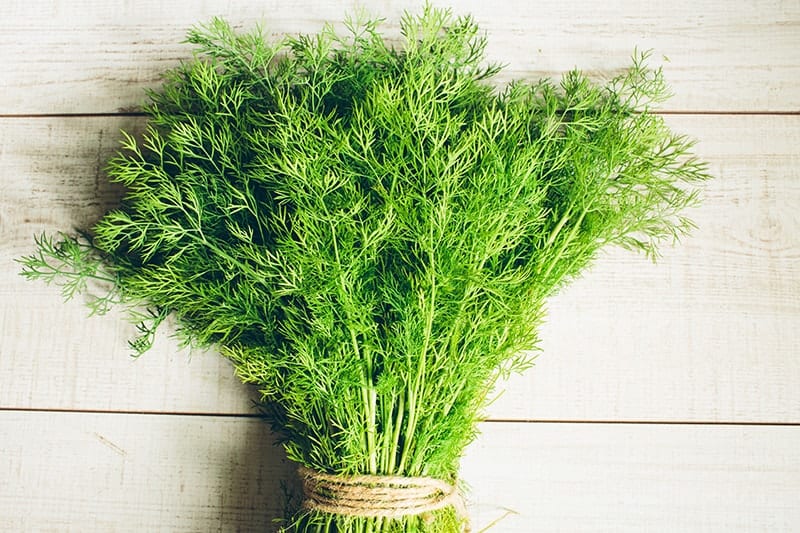
Types: Bouquet Dill, Fernleaf Dill, Long Island Dill, Dukat Dill
Scientific Name: Anethum graveolens
Mature Size: Up to 5 feet tall
USDA Hardiness Zone: 2-11
Light: Full sun
Water: Maintain moist soil
Soil: Well-draining, rich
Flower Color: Yellow
Dill is a fragrant annual plant with fluffy, feather-like foliage, and is widely cultivated for use in Eastern European dishes. It has a strong and punchy flavor, and pairs well with fish dishes, egg dishes, in white sauces, and with cream cheese. It can also be added to salads and soups for extra flavor.
The attractive green-blue foliage of the plant becomes the background for showy flowers in the summertime. Tiny aromatic yellow flowers cover the plant before giving way to flat seed pods. If left, these will allow the plant to self-seed, providing new dill plants for next year. To prevent this from happening, cut back flowers as soon as they fade, though fortunately, this plant is able to self-seed without risk of becoming invasive.
The plant is native to Africa and enjoys full sun, though it does best in a sheltered position. It cannot tolerate drought and should be grown in soil which is kept consistently moist. Dill has the strongest flavor when used as a fresh herb, though it can also be dried or frozen to preserve it for future use.
7. Chives

Types: Common Chives, Garlic Chives, Giant Chives, Siberian Chives
Scientific Name: Allium schoenoprasum
Mature Size: Up to 2 feet tall
USDA Hardiness Zone: 30-9
Light: Full sun to partial shade
Water: Average water needs
Soil: Well-draining
Flower Color: Lavender
Chives are perennial plants that belong to the same family as onions and garlic and have a similar scent and taste. They are clump-forming plants that grow from bulbs under the soil, which can be propagated by division when the clumps become too large.
Chives have a grassy look to them, with foliage that is a vibrant mid-green color. They also feature attractive lavender-colored feathery flowers that have the appearance of fluffy pom poms. The plant will self-seed from these flowers if left unattended, so if you don’t want more chive plants you will need to prune the flowers before they give way to seeds.
To grow your own chives, position them in a bright spot with a good amount of daily sun, though they can tolerate some shade. They should be grown in gritty and well-draining soil, with a moderate amount of moisture. They grow well in rock gardens, borders, and containers, both indoors and out.
Chives are widely cultivated for use as culinary herbs, especially in French dishes. The herbs are commonly used in recipes with sour cream, garlic, and cheese, but they are very versatile and can also be used in salads, potato, and other vegetable dishes and in soups. The flowers are also edible and are a pretty addition to salads and cold dishes.
8. Tarragon
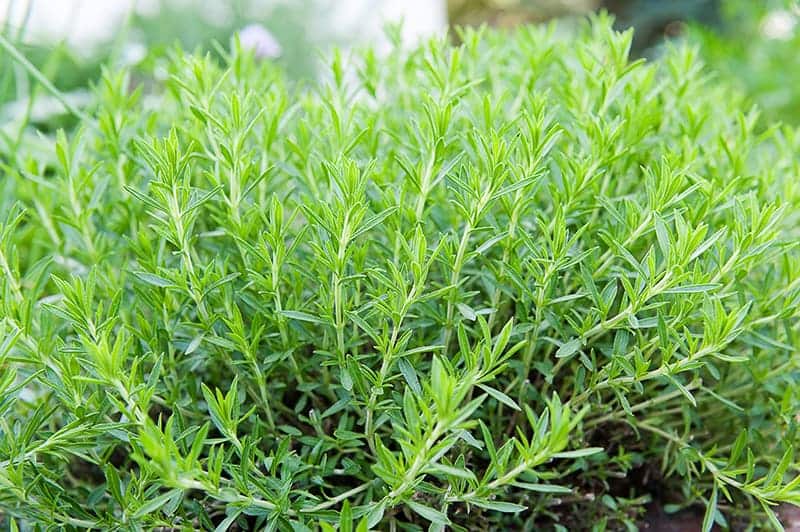
Types: French Tarragon, Russian Tarragon
Scientific Name: Artemisia dracunculus
Mature Size: Up to 2 feet tall
USDA Hardiness Zone: 3-7
Light: Full sun
Water: Low moisture needs
Soil: Well-draining, infertile
Flower Color: Pale yellow
This upright woody perennial is cultivated for use as a culinary herb and widely used in French cooking. It has a strong anise-flavor, which works well in a wide variety of dishes, including seafood, vegetable, stews, soups, chicken, and salads. It is also used as a medicinal herb that can be brewed to make tea, taken as a remedy for stress and anxiety. It can also be used to aid oral issues, numbing mouth pain, and eliminating germs, which cause bad breath.
The plant has attractive fine and narrow foliage, with soft yellow blooms that appear towards the end of summer. Tarragon is an easy plant to grow across a wide range of climates as it is drought tolerant and also cold hardy, making it suitable for growing in both cooler and dry, hot regions. It grows best in poor quality, infertile soil, so long as it drains well.
In fact, the scent and flavor of the herb will be at its best when it is grown in poor soil, which is kept very dry, so if you are growing tarragon, it is best to neglect the plant for best results. This plant can be propagated from stem cuttings, and also through division.
9. Mint

Types: Peppermint, Spearmint, Wild Mint, Ginger Mint, Catmint, Penny Royal, Apple Mint, Horsemint, Pineapple Mint, Chocolate Mint, Basil Mint, Orange Mint, Lavender Mint, Water Mint, Field Mint
Scientific Name: Menthe
Mature Size: Up to 2 feet tall
USDA Hardiness Zone: 4-11
Light: Full sun to partial shade
Water: Average water needs
Soil: Well-draining
Flower Color: Pink, purple, white
There are many varieties of mint; some are used as culinary herbs, while others are used as medicinal herbs, and some are not edible and instead cultivated for their aromatic properties. The foliage of mint varies between the different types, with some foliage being dark green, medium green, or even purple. The leaves can be smooth or fuzzy in a range of sizes, though one thing all mint plants have in common is their square stems and strongly aromatic fragrance.
In fact, mint is one of the most fragrant of all the herbs.. They are widely grown for use as herbs, but they also work well as ground cover or filling blank spaces in the garden as they have a vigorous growth habit and attractive aesthetics. These perennials thrive in bright light with some shade in the afternoon during hot periods. Variegated types of mint in particular will need protection from full sun. It should be grown in a well-draining and fertile soil with consistent moisture.
Mint is best used as a fresh herb and is rarely found in dried form, though it is possible to air dry the herb. It can be harvested at any time, though newer foliage will be more flavorsome than old. For this reason, prune the new growth of the plant often, encouraging more fresh growth. The herb makes an excellent addition to cold drinks, and can also be brewed in hot tea. Mint is also famed for its medicinal properties and is consumed by many as relief for symptoms of irritable bowel syndrome.
10. Sage

Types: Common Sage, Garden Sage, Purple Sage, Russian Sage, Golden Sage, Pineapple Sage, Tricolor Garden Sage, Scarlet Sage, Mexican Bush Sage
Scientific Name: Salvia officinalis
Mature Size: Up to 4 feet
USDA Hardiness Zone: 4-11
Light: Full sun to partial shade
Water: Average water needs
Soil: Well-draining
Flower Color: Purple, red, blue
Sage is a member of the mint family and is a perennial evergreen shrub. It has a rich history for both culinary and cultural use. Some people believe that sage has the ability to ward off evil spirits, and so it is used to cleanse homes by burning the dried leaves and wafting the aroma around rooms. It has also been historically used for treating snake bites, and still considered by some to be effective in treating mouth and throat infections, and easing gastric disorders.
As a culinary herb, it is popular for flavoring sauces, meat dishes, and plates of pasta. It can be used fresh or dried, and can also be steeped to make a sage tea.
As well as being cultivated for medicinal, cultural, and culinary uses, sage is also grown as an ornamental plant. The foliage of the plant can be different colors depending on the variety, with leaves coming in shades of purple, green, and gold, though most commonly sage leaves are a beautiful shade of silver-green. Sage plants also bloom with flowers coming in pale purple, red, and blue.
The plant is easy to grow in most climates. It will be perennial in USDA hardiness zones 8-11 but will grow as an annual in cooler regions. It is very hardy, and as long as the roots are protected from freezing with mulching, then most people will find their sage bounces back in the spring after dying back over winter.
Sage plants which are grown for culinary purposes usually need to be replaced every 3 to 4 years because they become woody and the leaves lose their flavor. Harvest these plants at any time of year, for use as fresh or air-dried herbs.
